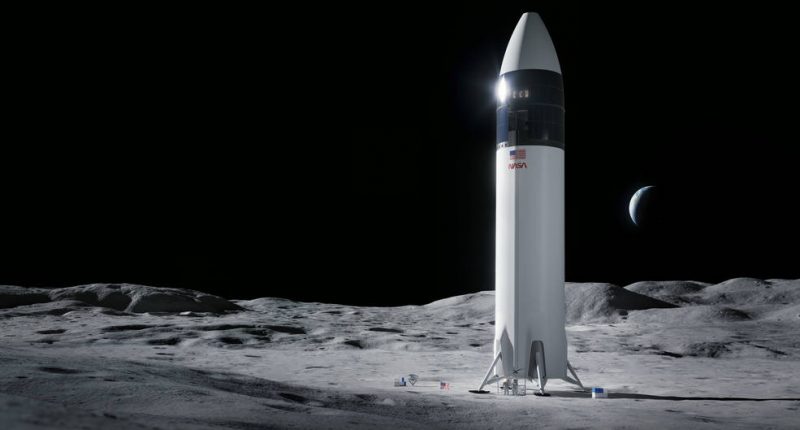SpaceX, having already secured its first contract for NASA’s first crewed demonstration mission under the Artemis program, has now been awarded with a second contract to further develop its next-gen Starship vehicle for another crewed demonstration landing on the moon.
In a press release, NASA announced that it had officially exercised Option B – that is, the modification of the current Human Landing System (HLS) contract between the two parties – under the Next Space Technologies for Exploration Partnerships-2 (NextSTEP-2) Appendix H Option A contract, several months after announcing its intent to do so. The modification, with a value of about $1.15 billion, allows for further development of the Starship lunar lander till it meets NASA’s requirements, and its subsequent for lunar expeditions and explorations under the Artemis programme.
This includes missions beyond Artemis III – which aims to put mankind (including the first female astronaut and first astronaut of colour) on the moon for the first time since 1972 – alongside docking with the lunar space station known as the Gateway, as well as delivering more mass to the surface of the moon. Of course, we have a long way to go before we reach that point, and NASA hopes that the uncrewed Artemis 1 launch – scheduled to be held today at 11:34 AM IST – goes off without a hitch from its Kennedy Space Center in Florida. Artemis IV, the second crewed landing demonstration mission, is slated to be held in 2027 with SpaceX’s help.
“Returning astronauts to the Moon to learn, live, and work is a bold endeavor. With multiple planned landers, from SpaceX and future partners, NASA will be better positioned to accomplish the missions of tomorrow: conducting more science on the surface of the Moon than ever before and preparing for crewed missions to Mars,” NASA Administrator Bill Nelson said in the press release.
.@NASA announced that @SpaceX will provide a 2nd crewed landing demo on the Moon as part of the Artemis IV mission.
With multiple planned lunar landers—from SpaceX & future partners—NASA will be better positioned to accomplish our bold missions. https://t.co/Q4BCuN7Om1
— Bill Nelson (@SenBillNelson) November 15, 2022
“Continuing our collaborative efforts with SpaceX through Option B furthers our resilient plans for regular crewed transportation to the lunar surface and establishing a long-term human presence under Artemis,” said Lisa Watson-Morgan, manager for the Human Landing System program at NASA’s Marshall Space Flight Center in Huntsville, Alabama. “This critical work will help us focus on the development of sustainable, service-based lunar landers anchored to NASA’s requirements for regularly recurring missions to the lunar surface.”
Musk, who seems content to fire any Twitter employee who criticizes him, seemed please with the development. “Much appreciated, SpaceX will not let NASA down!” Musk, who’s also the new owner of Twitter, tweeted.
Much appreciated, SpaceX will not let NASA down!
— Elon Musk (@elonmusk) November 15, 2022
This development further underscores NASA’s preference for SpaceX, which earned it a fair amount of backlash last year. Jeff Bezos’ Blue Origin, a rival to SpaceX, had protested NASA’s decision to award the contract to Musk’s space company for $2.9 billion last year, and taken NASA to court. Its efforts, however, were of little use as it subsequently lost the lawsuit.
The Tech Portal is published by Blue Box Media Private Limited. Our investors have no influence over our reporting. Read our full Ownership and Funding Disclosure →






